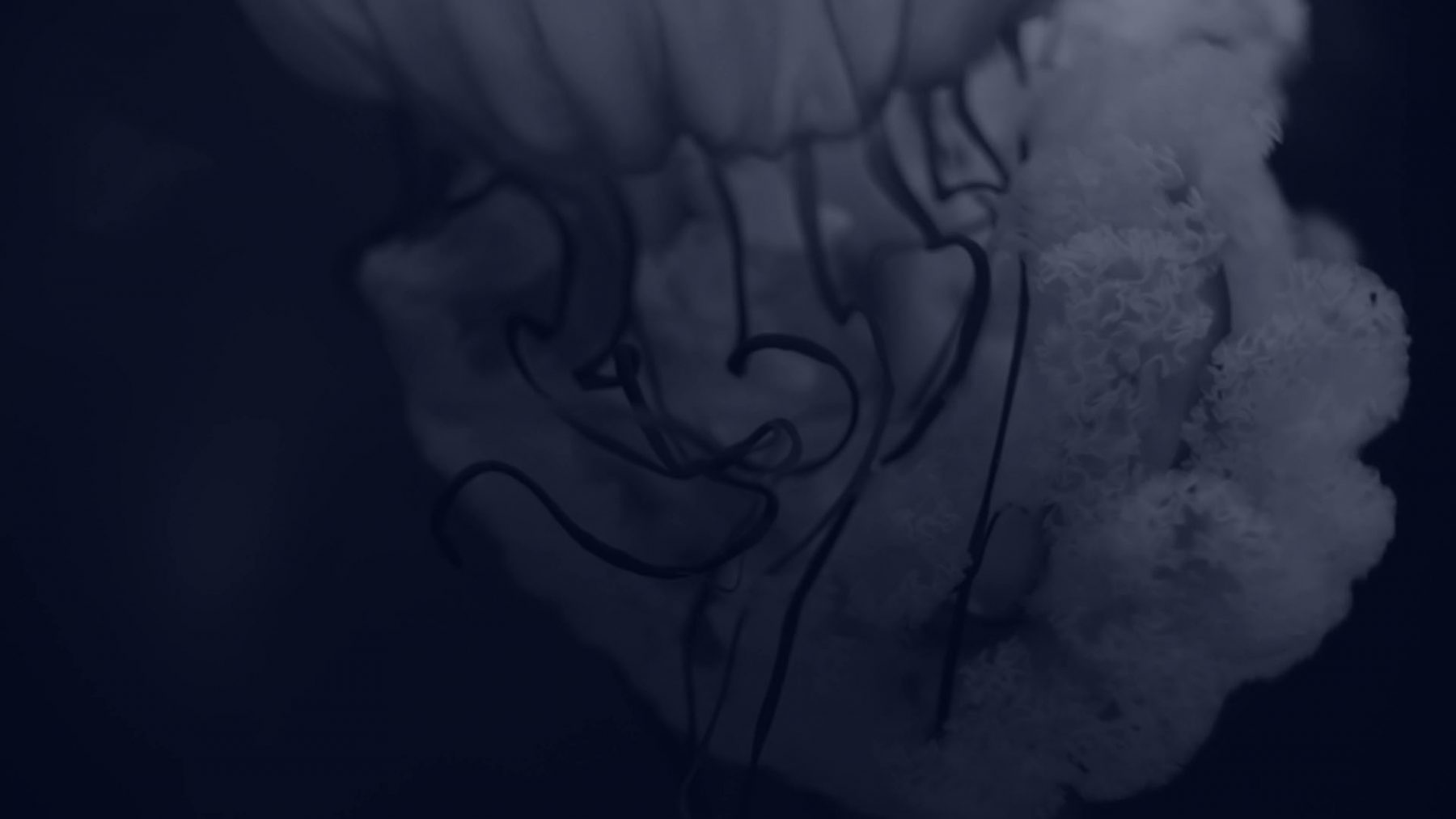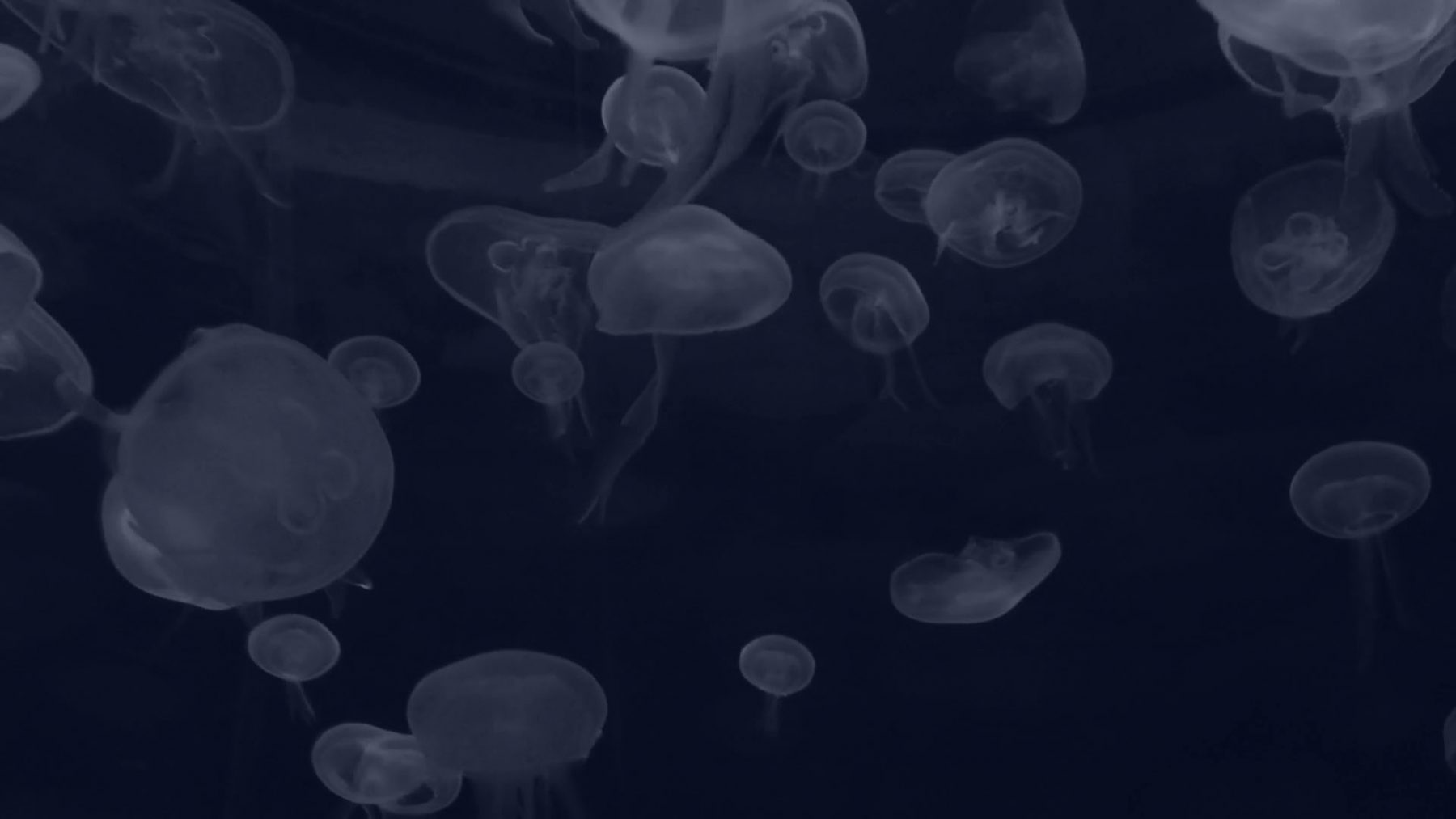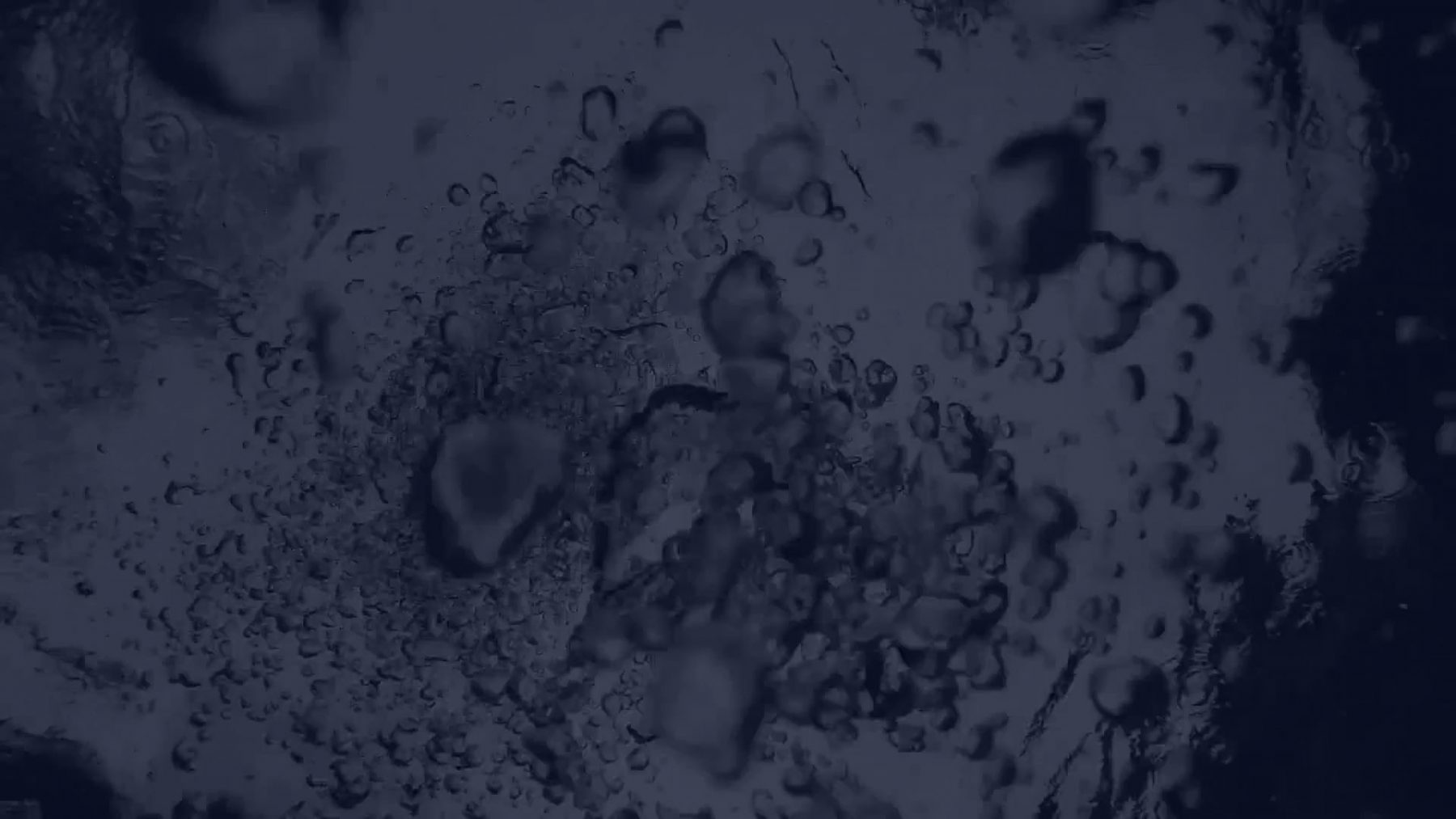Deep Blue: A Cinematic In-Between-Living’s Memories of Future
Prelude:
It could be said in different ways. Désoeuvrement for Blanchot. Melville’s Bartleby formula: “I would prefer not to”. The procadence that Fellini’s cinema professes, or the exhaustion of the speech that phagocytes itself and occupies, without counting or telling, in Beckett. Ways of appearing of the refusal, the unfinished, the fugitive movement that recedes before the forms. Going back to Heraclitus, and moving on by Whitehead’s side, declaring that you never think twice about the same thing, because thought is pure process, continuum without beginning and end, modulation of forms to de-formation, rhythms to proliferation. Neither recognizing or surrendering to the prevailing hylemorphism. It could be said in a singular and profoundly anomalous way: Deep Blue. A place? No, rather an affective tonality, an anonymous occasion for a possible adventure of thought. A speculative fabulation, Donna Haraway would have said. A pre-individual community of thinkables that finds a singularizing attractor in cinema. A radical nomadism, where cinema, as a connective technique, makes up unprecedented relationships and connections across transversalities that make the cosmos germinate in multiverses that the point of view of creation explores, experiments and exhausts. A devotion to the moving of life that is affirmed in the course of devorations, diffractions, and obliquities. Without a priori, without presuppositions, without location or measure, being a remaining rest, ruin and excess of life to come. Aqueous immediation as journey and medium.

We only remember. We are only memory of worlds to come and, even so, we are related to a past. A past of future. A futurity of past. We only remember, the problem is that sometimes we are only human and memory requests that we must be in unison much more, and much less than simply humans. We only remember, we are only humus, un-done humans, scattered remains.
*
We are only images. Images between images. It is not so easy to remember though. The memory overflows, spills, sents into motion in the pregnancy of the less expected images. The yearning of Jean-Daniel Pollet in Jour après jour, a will of the Mediterranean that makes him one more garden image among the flowers that embrace him while he is waiting for all the lights to turn off; while he is waiting for the cosmic cinematograph to obturate its last breath, dissolving all the images. Un-done, scattered remains. Pollet a man-less, a garden blooming.
*
Remembering, remembering. Make Pollet’s Mediterranean will the vertigo of being an interval between waves. Jump on its crest. Un-done humans, scattered remains, being pure breaking waves. Keep going, keep going, remembering until dismembering. Open sea, submerged frames, alive frames. We are only images between images, will to power that overflows all the Mediterraneans. Deep Blue calling.
*
The cosmic cinematograph as the intervaling that between images makes life a detaching novelty, makes it strain and become that affective wateriness that inhabits the Deep Blue. After the waves and at the end of the open sea, where Blue overflows all the oceans and skies, the wateriness spills, becomes pure affect and —the Blue—, tonality in continuous variation between means and mediums. Deep Blue, matter of the interval, oscillating and vibrant tonality, memory-fuel of a cinematic in-between-living.
*
Un-done and, as scattered remains, we remember. We are a threshold, we are spectrum. The Blue that calcinates the bones, the organic re-enacted as trans-human humus. We remember, we are pure chromatism without core, memory-blink, spark-remembrance, Blue that burns, deep lava, Blue that perseveres. Everything asking for its de-form, the images accelerating the detachment of the pigments. Tonal density in modulation, in movement. “Sometimes we are only human” as oblivion. Remembering, being a remembrance of the world between the intervals, across the transition of the images. “Only sometimes we are human” as pure memory. Blue accelerating and its depth becoming pure cosmic attractor.

*
Only sometimes we are human, always humus-interval, always our deformed and deforming bodies, unfinished frames. To be pure remembrance, film-surface, membrane filtering, opening gradients of the excited Blue. Return to the Blue, being stain-remains with its depth. To feel again that we have always been pure burning wateriness. There are no frames such as cores, some can be more or less pregnant, more or less notable. There are only gestures, operations for them to be just images and nothing more. We are frames, anonymous operations, that watch the namelessness and facelessness that maintain and preserve the open power of the cosmos. Only sometimes we are this or that, because we are only when we are tireless flight. One only is a frame to last while passing and not while stopping.
*
We are photo-genetic matter of the world, we are cinematic in-between-living. We are an anomalous in-between, we are what emerges from the difference between two fluxes. Pure passing, vibrating membrane, humus that populates the interval and, that finally, recognizes that its most recent remembrance is a human one; but not the only or more powerful. Un-done, scattered remains, being the place of unusual and unthinkable connections. Intervals. Operators of the burgeoning, and always different, guardians of the between-images dynamism. Intervals. Deep Blue, brain-world, aqueous immanence, active memory, emergence that does not allow itself to be recognized definitively. Deep Blue, singular Blue, differentiating, varying. Other-new worlds arriving, because we are only images by sustaining the paradox of being; while being in the process of being what is not yet, and cannot be foreseen. New worlds, images between images, because the image is always what is to come.
*
Deep Blue that reminds us that the matter of life, of the (always) cinematic in-between-living is the montage-assemblage, is the connection as the diffraction in the intervals that opens rhythmic and tonal variabilities in the energetic fluxes. Deep Blue, remember that its intervaling rhythm is always symbio-genetic. And if the matter of life is defined as the becoming of images between images, then the act of breathing, of not letting the living fall, is the act of being devoted to the intervals. We breathe in the intervals, the breath of life rises from the abyss that these are. Intervals, which as vital breaths, are passages, are wormholes that connect divergent times-spaces for the world not to dry up.
*
We breathe Blue, we vibrate in its depth, there where we are an anonymous and impersonal in-between-being, a forming weaving while it deforms and frays. The blue in its depth is pure inextinguishable power that explodes the bodies. The human, the animal, the living in its most diverse forms can and must be exhausted, worn to the finest of surfaces, film-membrane, minimum resistance, spectrum and vibration necessary for the difference. Un-done, scattered remains in-between-reigns and multi-species. There is no longer a particular life, only a profoundly singular life.

*
The cosmos as an impersonal intervaling, and the anonymous and cinematic in-between-living as its condition of co-evolution, of lasting together while the existence is instaurated as a montage-assemblage. Our skin and celluloid have always been Blue. Deep Blue, our genetic condition. The cinema, the cinematic in-between-living, the mode of expression and complication of our ethology. Inorganic multi-species ethology, (poetic) ethology of the membranes and their vibrational and transductive qualities. Exhausting, spending, and polishing the life, until it ceases to be against-nature the intimate and close kinship that we have always had with marine life, with octopus, squids, and jellyfishes.
*
A natural history of a singular chromatism. We are relatives of the Deep Blue and from it, we must be its guardians. A co-evolution, where what matters is the variations of tonalities, the contrast of their intensities, the dynamism of their differences. In-between-being octopus, squids, jellyfishes. In-between-being spots, stains, strokes, chromatic blocks, rhythms, and intensive vibrations. Natural history of the cinematic montage-assemblage of more or less dense or defined waterinesses, of thresholds-membranes that enable the pass and maintain the flux of between-images, in-between-lives.
*
Memories of future where the history of cinema and natural history are confused and mixed. Memories of future that, in fact, jump out of history to be worthy of the event Deep Blue Event, in which vibrational and membranous singularities as Vertov, Peleshian, modes of the humus cinematographicus appear; but also cephalopods and coelenterates belong to the same phylum, to the same vital series of organic and inorganic montage-assemblage techniques that keep the cosmos moving.
*
We only remember. We are only images (between images). We are only an aberrant in-between-living that if it desires to re-exist to a world in (human) ruins, it must to be opened to be the ruin of the human. Un-done, scattered remains in-between-reigns and multi-species. Many genetic memories could be reclaimed, even so, accept the mystery of the call of the Deep Blue. And then remember … We do not make films, we are cinema and film. Everything that is living is a filmmaker at the service of the cosmic cinematograph, it is channel and medium between mediums and by other means of the immanence of life, of the point of view of creation, which this time nameless and faceless has decided to be known as Deep…
(…)
Deep Blue.
*
As humus cinematographicus, we must ask the right questions to the modes of existence, that still have something potent to say about a chromatic vitalism between waterinesses. Memories of future of a cinematic in-between-living, perhaps as the poetic ethology of those organic and inorganic living beings that watch in order to make out of the Blue the deepest potency of existing of what is resistant to be a last and only occasion for thought and, on the contrary, it exacerbates the fact that it is a multiplicity for the latter.
How many Blues inhabit us, how many Blues proliferate when we compose with each other, when we are membrane-montage-assemblage between aqueous mediums?
What appears certain is that, in order to respond to, indifferent to our most recent memory is this human, animal, vegetable, organic or inorganic, indigenous or alien, we must be a pure surface, a pure open and available film.
Alive frames, submerged frames…
Blue memories,
We only remember.
We are only images (between images),
Lasting, blueing …
Sebastian Wiedemann is a Colombian filmmaker-researcher and philosopher, or as he likes to say a practitioner of cinematic modes of experience. His works investigate liminal intersections animated through experimental cinema and philosophy, aware of a possibility for thought-cinema as living poetic ecology, as a possible surface for the affirmation of a Cosmopolitics of Image. His works have screened in venues around the world and have received retrospective shows in Brazil, Colombia, Spain, and Ireland. In 2015 his film Los (De)pendientes was included in Artforum’s list of the best films of the year and in 2017 won the Special Prize of the Jury at Fronteira Film Festival (Brazil). In 2017 his film Abismo was included in film series Ism Ism Ism: Experimental Cinema in Latin America, conceived by Los Angeles Filmforum as part of the Pacific Standard Time: LA/LA initiative. During 2019-2020 his film Obatala Film won several Prizes in Brazil. He is also editor and curator of the online platform Hambre | espacio de cine experimental which focuses on critical experiments seeking dialogue with new tendencies in Latin American avant-garde cinema and where he has edited the books La Radicalidad de la Imagen. Des-bordando latitudes latinoamericanas. Sobre algunos modos del cine experimental (2016) and Pensamientos migrantes: Intersecciones cinematográficas (2020).